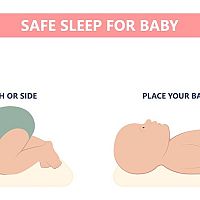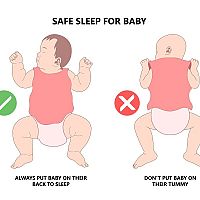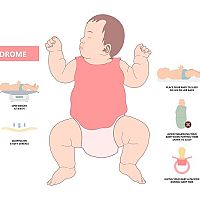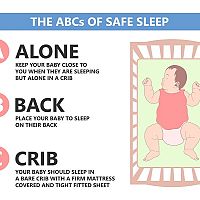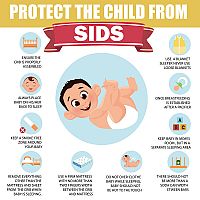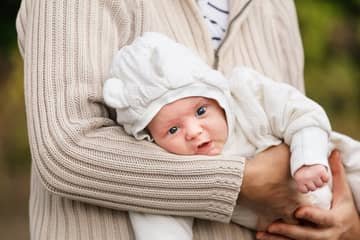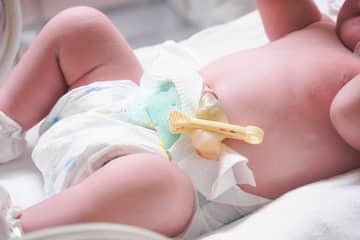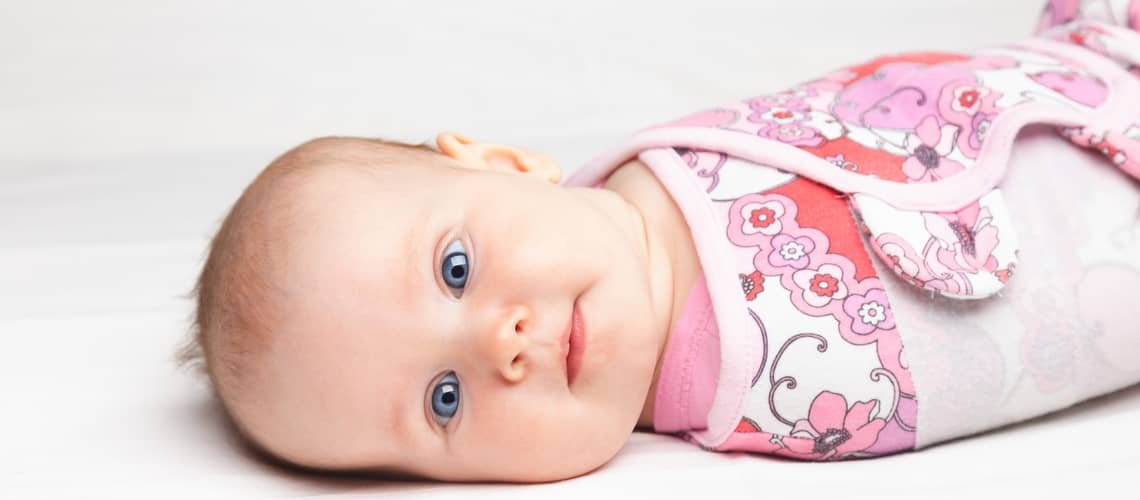
Sudden infant death syndrome - up to what age is the risk and what is the first aid
After delivering a healthy baby to the final due date and a subsequent safe delivery with the best possible outcome, every woman yearns in joyful anticipation. However, the painful parenting journey does not end with pregnancy and the birth process. After the birth of the baby, parents may encounter pitfalls that can turn their lives upside down. One of the biggest and most feared scares is sudden infant death syndrome. A truly frightening name covers only a fraction of what this syndrome entails.
Most people would prefer to read about the positive aspects of parenthood, but the truth is that in order to prevent the occurrence of cases of sudden death of children a few months after birth, it is necessary to spread as much awareness as possible about the general characteristics, possible causes of this unexpected phenomenon, but also about preventive measures. which could prevent such an accident. However, the most important aspect is knowing the procedures that must be applied in case of early detection of the symptoms of the mentioned syndrome. You can read all the mentioned information in our article.
What is SIDS?
The syndrome of the sudden death of a newborn is also known under the abbreviation SIDS, which comes from the English phrase Sudden Infant Death Syndrome. This is one of the most common causes of death of newborn babies, the circumstances and exact reasons for which cannot be determined even by a post-mortem examination. The syndrome is characterized as the sudden death of an apparently healthy baby between the ages of two and four months after birth. However, such a death can occur at any time during the first six months of a child's life.
Sudden death syndrome is mainly associated with sleep, because it is during this time that babies die most often. More precisely, it is the child's nighttime sleep, but there have also been cases when the death of a newborn occurred during sleep during daylight hours. However, SIDS statistics point to a specific time frame when the sudden death of apparently healthy babies is most likely, namely from midnight to six in the morning. There are even some records that the highest incidence of SIDS syndrome can be attributed to the colder months of the year.

Causes of sudden infant death syndrome
For several decades, experts have been working to clarify the causes behind SIDS. While some of them focus on a genetic explanation in the form of a gene disorder responsible for weakening the muscles involved in the breathing process, others look for justification in possible metabolic errors. These consist in the inability of the body to process fats and their subsequent accumulation, which disrupts the heart's activity and causes a complete stop.
There is also a theory that blames the sudden death of a baby on an insufficiently developed part of the brain, which is responsible for the function of the respiratory system. Despite these studies, the cause of sudden infant death syndrome is still unclear. In any case, it can be concluded that all the above-mentioned explanations are somehow involved in the development of sudden infant death syndrome, while uncontrollable and controllable risk factors also contribute to it to a large extent.
Uncontrollable factors
As part of the risk factors that can potentially increase the chance of SIDS syndrome, it is possible to define certain groups of babies with relevant physiological or genetic features. First of all, it is a risk group characterized by the age limit of two to four months, when babies are most at risk of sudden death syndrome. Statistical data also show that the probability of SIDS syndrome is somewhat higher in boys.
Certain factors from the aspect of childbirth can also contribute to a higher risk, in particular the birth weight of the newborn and the premature arrival of the baby into the world. The death of a baby due to SIDS syndrome is caused by a number of bodily processes that end in cardiac arrest. The human blood pump does not receive instructions to cope with a stressful situation, because due to premature birth, the brain did not have enough time for full development.
Since many stressful situations can lead to cardiac arrest, it is definitely necessary to mention breathing problems. In newborns, these can stem from a recently overcome cold or other respiratory tract infections. Parents should therefore pay attention to any signs of shortness of breath or other breathing problems, not only during the illness, but also after it has been overcome. One of the most at-risk groups of newborns in terms of sudden death syndrome are children in whose family such a newborn death has already occurred in the past.
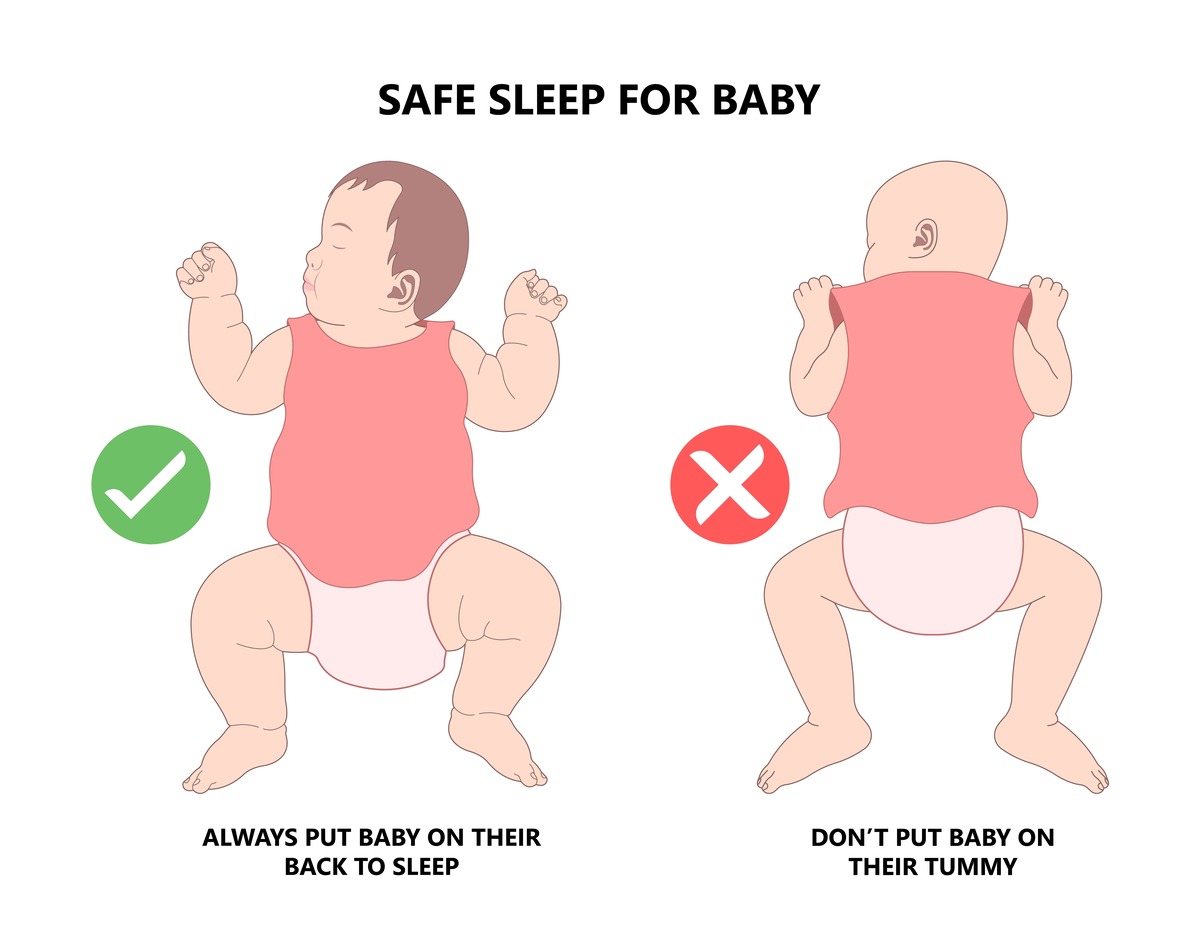
Modifiable risk factors
Sleeping a newborn on his stomach is considered one of the most dangerous parental actions. Premature attempts to position the baby on the stomach can result in sudden infant death syndrome. Sleeping on the stomach in children, who cannot control the neck muscles at an early stage of life, leads to the inhalation of already exhaled carbon dioxide accumulated in a kind of bubble near the face. As a result, the body fails due to insufficient oxygenation.
A scenario with a similar ending also threatens in the case of the baby sleeping together with the parents. Some newborns are so used to the proximity of their parents that it is impossible to put them to sleep in the corresponding crib. In such a situation, parents choose co-sleeping with the child in the parents' bed, which, however, must be properly implemented. The newborn should be protected by pillows and other elements from potential danger in the form of being rolled in, or attachment to parents.
The risk of sudden infant death syndrome also increases due to an inappropriate environment in which the child falls asleep. This applies not only to blankets and blankets, in which a newborn can inadvertently become entangled during sleep, but also to a mattress that is too soft. You should also be careful about overheating, which in the worst cases can lead to the failure of the body, and thus to the syndrome of sudden newborn death. The optimal temperature in the room where the baby sleeps coincides with the classic room temperature of 18 to 20 degrees Celsius.
From a parental point of view, it is also possible to influence passive smoking, or exposing the child to the influence of cigarette smoke or other vapors of addictive substances, which can cause sudden death in the child. No one should smoke or drink alcoholic beverages near the baby, but also in the whole household, where the baby, logically, stays most often.
SIDS prevention
In order to prevent the occurrence of sudden infant death syndrome as much as possible, it is possible to apply certain safety principles, which consist in the elimination of influenceable risk factors and the introduction of specific pre-sleep and sleep habits.
A safe sleeping environment
The basic element in every children's bed is the mattress. It should have sufficient strength and quality. Parents should definitely avoid soft mattresses, which can potentially endanger the baby during sleep. It is important to get a size-appropriate mattress that completely fills the area of the crib, thereby eliminating the danger of a child getting stuck between a smaller mattress and the crib frame.
A safe crib should not contain the amount of toys or pillows that could lead to the occurrence of SIDS syndrome. If the child has problems with positioning, one favorite toy is enough for the parent to lure him to the right side, while to avoid constant lying on his back, one pillow will serve to prevent the child from rolling over on his back. However, it also needs to be positioned in such a way that the baby does not find itself in the stomach position during sleep.
As for duvets, parents should choose a safer variant in the form of a sleeping bag, in which there should be no risk of turning over on the stomach under any circumstances. However, if the child still prefers to sleep under the blanket, it is advisable to choose one that does not exceed half of the child's chest. The baby's handles should also stick out from under the duvet, while they should be positioned on the surface of the blanket, thus preventing the potential displacement of the blanket on the head.
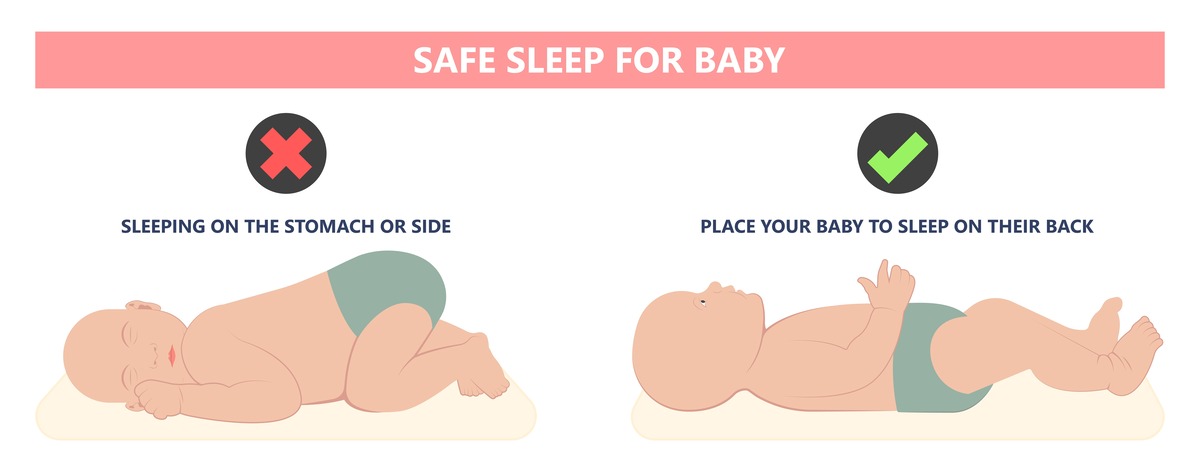
Adaptation of the ambient temperature
If parents want to avoid overheating of the child's body during sleep, it is necessary to look not only at the optimal temperature in the environment in which the child falls asleep, but also at what the baby is wearing. As we have already mentioned above, the room should ideally be 18 to 20 degrees Celsius, while under no circumstances should the crib be placed near a heater or other device emitting heat.
In terms of clothing, preference should be given to comfortable pajamas that the child will not sweat in, but also should not freeze in. Since newborns excrete excess heat through the skin on the head, the baby's head should not be covered during sleep. This applies especially to sleeping indoors, where the child is not at risk of catching a cold.
The pacifier prevents the respiratory system from failing
The occurrence of sudden infant death syndrome can also be prevented by simply using a pacifier during sleep. Such a preventive measure comes into consideration only if the child has already learned to breastfeed regularly. In terms of time, this represents the period in the sixth to seventh week of the child's life. A pacifier for sleeping protects the baby from sudden cessation of breathing. If the pacifier falls out of the mouth after falling asleep, there is no need to try to reinsert it.
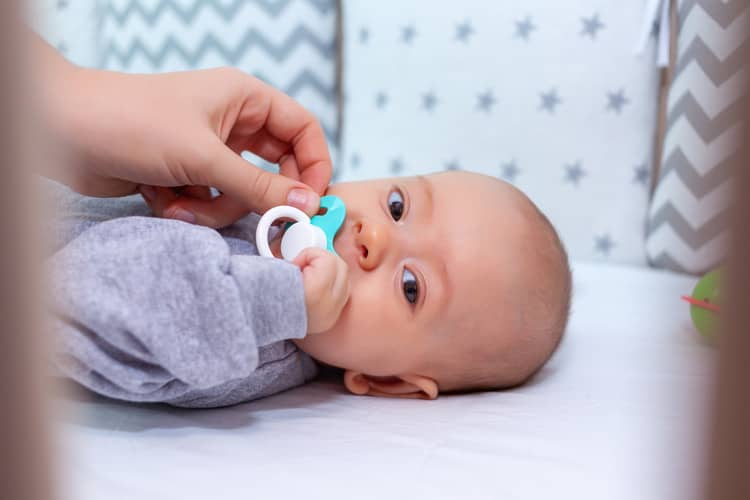
Breastfeeding as the most effective help against diseases
Based on previous studies, it can be concluded that breastfeeding reduces the probability of SIDS syndrome by up to half. Although the rationale for this measure is not entirely clear, it is possible that it is mainly related to the nutrients contained in breast milk. These milk components protect the baby from infections or diseases that attack the baby's metabolism or the functions of the basic organ systems in the baby's body.
It is ideal if breastfeeding or breast milk feeding lasts at least until the sixth month of the child's life. It is always necessary to let the child burp to avoid suffocation with excess air that accumulates in the baby's body during breastfeeding. Care should also be taken that the mother and baby do not fall asleep during breastfeeding.
Using a breath monitor
In the case of imminent SIDS syndrome, controlling the baby's breathing during sleep through breathing monitors can act as a helper. This control system does not guarantee a reduction in the probability of sudden infant death syndrome, but it can help if there is a respiratory disorder or possible cardiac arrest. The signaling system notifies the parents, who are able to react promptly in the form of calling the health service and performing first aid.
Although breath monitors cannot be relied on 100 percent, their positive effect on the psyche of parents is significant. Their unreliability lies in false alarms, which can unsettle and worry the parent so much that he stops trusting the device, while the opposite case can also occur - the signaling of the problem does not occur at all, and thus an unnoticed accident occurs. In any case, it is true that the breath monitor itself does not work as a prevention against the SIDS syndrome, and therefore it is necessary to apply the rest of the mentioned principles.
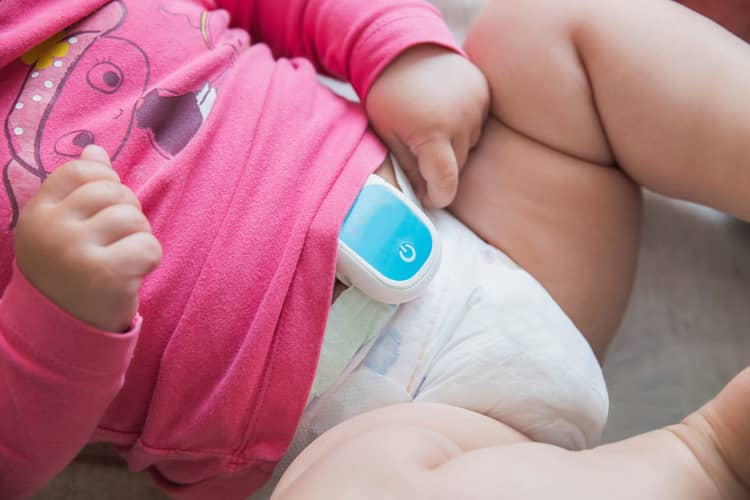
What to do when the baby stops breathing?
If the parent is woken up by the alarm of the monitoring device, or notices signs of the failure of the basic functions of the body in the child, e.g. difficult breathing, gasping for the veneer, bruising, it is necessary to take action immediately. Parents whose children belong to the risk groups of sudden infant death syndrome should learn the principles of first aid in advance.
Traversing the airways
First of all, it is necessary to check whether the baby reacts to certain stimuli, such as pressing the ankles, clapping or the parent's voice. If the newborn is unconscious, it is necessary to check whether there is suffocation with vomit or other foreign objects stuck in the throat. The passage of the airways can be achieved by gently tilting the head. In this position, the parent holds the child's forehead with one hand and lifts the chin with the other. Resumption of breathing can be observed through a heaving chest.
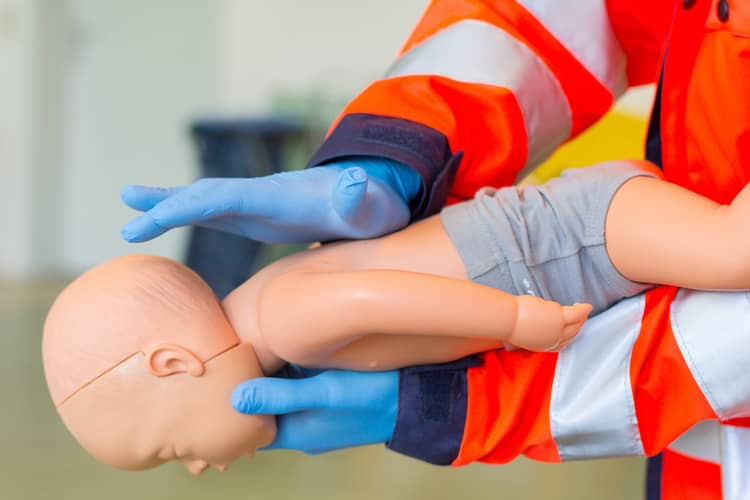
How to resuscitate newborns?
If breathing does not occur, resuscitation is necessary. It must be started before the parent calls 112 or 155. Sudden infant death syndrome and first aid related to it require a special approach in the case of babies under one year of age. During the initial five breaths, it is necessary to cover the baby's mouth and nose with the mouth, while the parent watches the child's chest rise. Breaths are appropriate for the size of the child's lungs.
If, after the initial five breaths, the parent does not register any change, they can proceed to heart massage. With the index and middle fingers, it is necessary to find a place in the middle of the chest, while the pressure should go to a third of the depth of the child's chest. Three compressions are followed by one breath, while this resuscitation rhythm must be performed for one minute. Subsequently, the status change is checked. If none has occurred, resuscitation must be continued until the arrival of the emergency services.
SIDS - experience
In connection with this topic, moms on web forums tended to reassure frightened mothers. They especially stressed the need to eliminate risk factors, such as sleeping on the baby's tummy, overheating or smoking near the baby. Some also highlighted the breath monitor, which helped them to a great extent in calming the mother's nerves from the possible occurrence of sudden infant death syndrome during the baby's sleep.
The mothers also agreed that the occurrence of SIDS syndrome cannot be prevented. It is necessary to do everything in the parents' power to prevent such an accident, but the rest is beyond the parents' control. It is necessary to keep a cool head and not worry about something that may not threaten the child at all. If a particular baby belongs to a risk group in connection with the SIDS syndrome, concerns are justified, but otherwise it is necessary to maintain a calm and positive mindset.
The most frequent questions - FAQ
Even psychologically demanding topics require attention, which is why the topic of sudden infant death syndrome deserves a detailed treatment in the form of this article. Even though we tried to fit all the important information into the main part of the article, some of them found a place only in the questions and answers section. In case you want to share your experience, knowledge or have other additional questions to which you would like to know the answer, but you did not get it in our article, do not hesitate to contact our constantly checked comments section.
Up to what age can sudden death syndrome occur?
Can smoking during pregnancy lead to SIDS?
Are there any tests that could help detect the risk of SIDS?
Gallery
Pridať komentár



